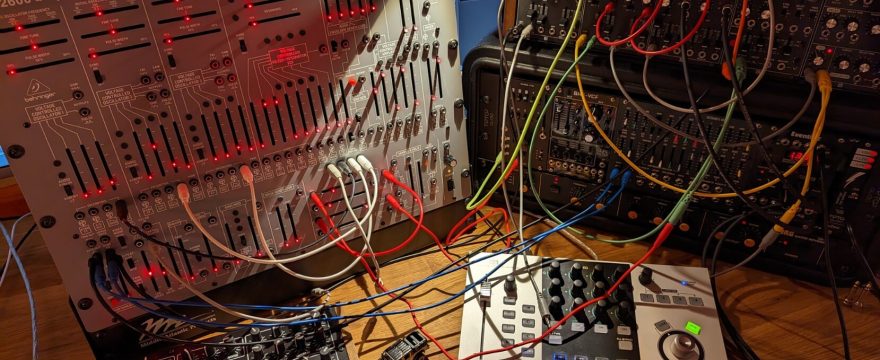I purchased my first bit of eurorack kit in 2022 and put it to work in numerous projects. What attracted me to modular that it provided a convenient way to access a wide range of classic sounds that modern synths simply can’t produce.
Until now, I’ve treated it as a configurable performance instrument – a way to bring the past to today. But what else can it do? And what happens when you mix and match these classic modules in ways not previously possible?
In search of answers, I spent a quality evening designing a few analog modular drum kits, testing each patch idea with multiple oscillators and routings from various modules.
Let’s listen…
Kicks
We’ll start with a kick created with the Roland System 500 (triangle VCO waveform):
Here’s the same Roland filter etc. but fed by a sine from Behringer’s Arp 2600 clone:
Same as above, but with a pure sine from Deckard’s Voice in place of the Arp:
And finally, a mixture of oscillators from the rare and magical Ondes VCO:
Snares
Because the System 500 envelopes are so wonderfully snappy, I decided to stick with them for the snares. I pulled in a little white noise from Deckard’s Voice and some pink-ish noise from the Arp 2600 and tried various oscillator, envelope settings, and mixed the sources to taste.
This snare features the Arp 2600 pulse (square) wave:
Same as above but fed by Deckard’s sine:
And a lovely mixture of ultra-classic oscillator designs from the Ondes VCO:
Full Kit Pattern
So I picked my favorite combinations, designed a couple of cymbals and…
…multitracked a simple drum pattern (dry, compression only):
Just for fun I mixed in a sampled kit as well to see if they played well together:
Conclusions?
A lovely evening was had by all. No losers here! I was particularly struck by the dramatic differences with such small changes in the various source modules.
Dial in your patches carefully, kids. And hunt for those sweet spots… it’s easy to miss ’em!

Leave a Reply